By Dusty Green
Queer Bodies | Queer Narratives explores the lived experiences of a group of Fredericton-based artists who identify as gender and sexual minorities, through a variety of mediums including photography, fashion, archival records, video, and more. The exhibition, curated by Kerry Lawlor, is a platform for queer artists to share their perspectives on living and loving in an increasingly divided world, where queer voices are too often driven into the shadows. It is an invitation to share untold stories, and a celebration of the queer lives that have always been, and will always be, an important part of this province. The breadth of work included in Queer Bodies | Queer Narratives forms an exquisite corpse of shared experiences that explore themes of identity, history, gender, sex and sexuality.
Artists Kyle Kirby and Vincent Briggs both reinterpret period-specific garment design through a queer lens, but their finished products are from two completely different worlds. Kirby combines design elements from the closets of French nobility with bold jewel tones, hard angles, and metal accoutrements to create Guillotine. This line of couture clothing embraces opposing aesthetics to imagine a post-gender, post-punk future.
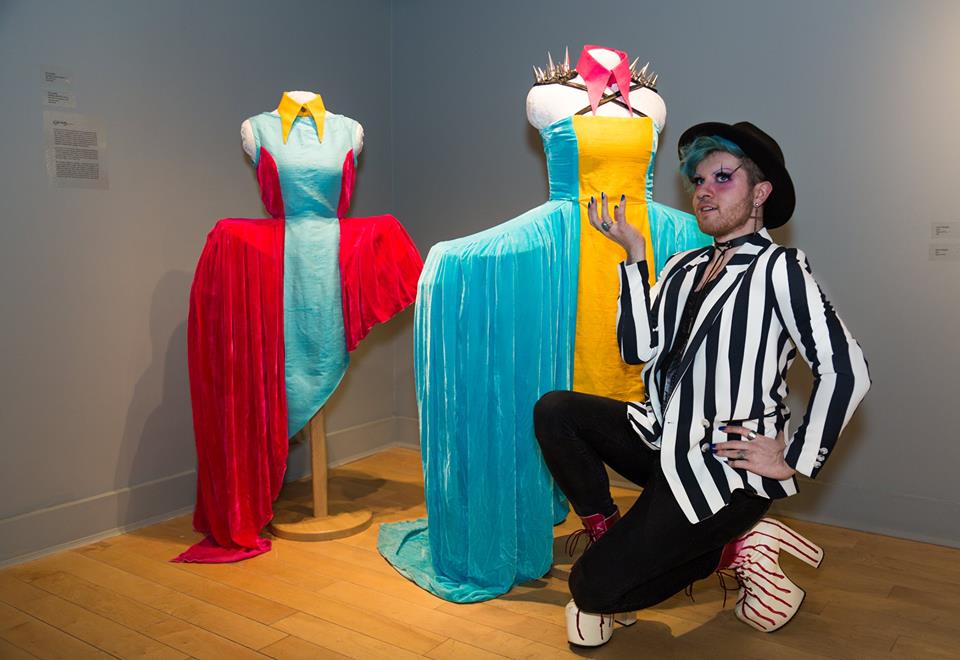
Equally of and not of the this era, Vincent Brigg’s tailored waistcoats would fit seamlessly into an archive of 18th century clothing, were it not for the cheekily hand-embroidered monsters lining one design’s center-front and pockets. The hand-crafted details elevate the garments from purely historic re-creations to unique labours of love.
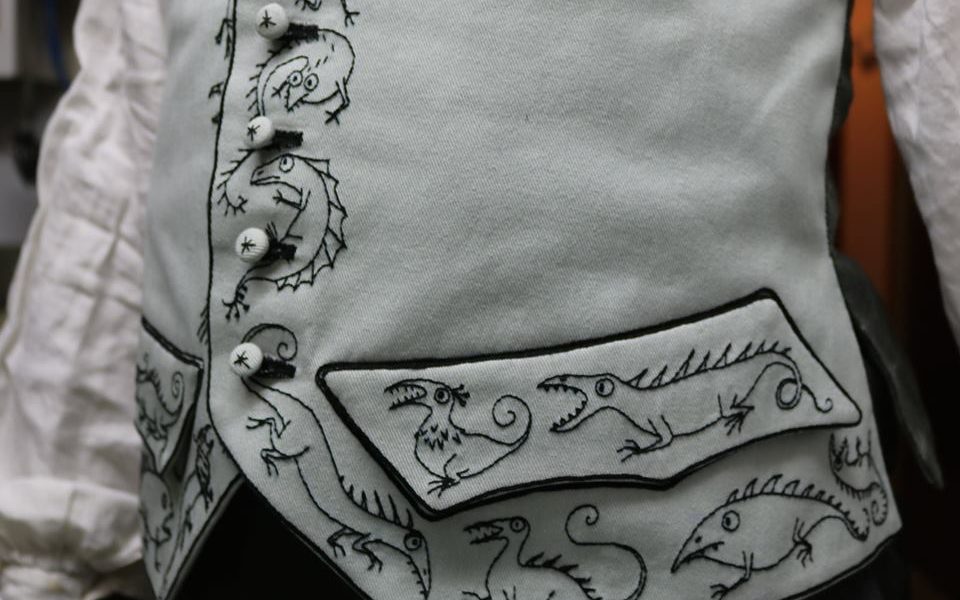
Chase Benjamin Plourde displays the two collages Puberty and Second Puberty, a self-portrait in the form of a sculpted bust, and a mock-historic bottle of testosterone, reminiscent of late 19th century medical tonics. Drawing from vintage representations of masculinity and gender, Chase’s collection feels deeply personal; an open-heart exploration of Trans identity and individual expression, viewed through the lens of an imagined gender-inclusive past.
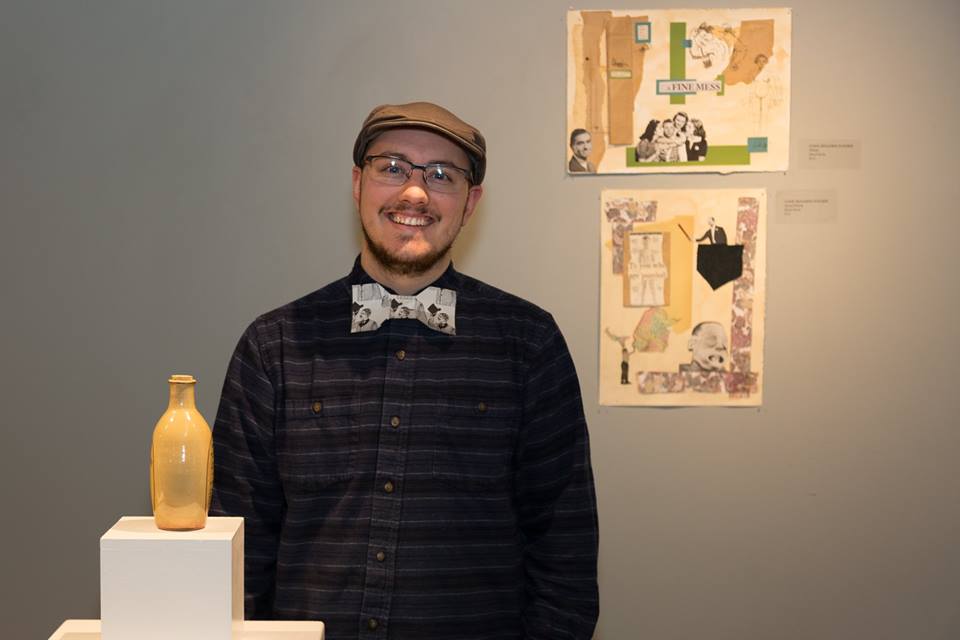
Angel Williams’ stunning acrylic portraits of warmly lit figures feel distinctly queer in their application of colour, pose, and subject. Each painting radiates a rich sensuality, nearly reminiscent of saintly portraiture; like static pop-portraits of contemporary queer angels that walk among us. Williams’ wraps their poised subjects in a warm ethereal light, celebrating and venerating their gender diversity with a comforting glow.
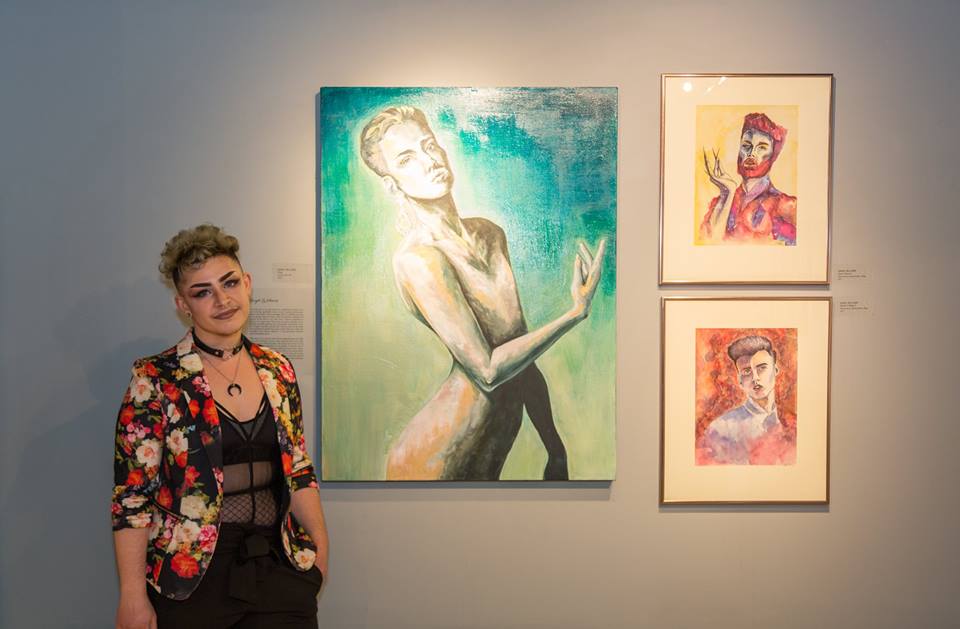
Continuing the long tradition of using photography to capture queer stories, Kelly Baker showcases a set of rich black and white portraits which contribute to contemporary narratives of queer lives in the province. Photographic documentation has been instrumental in preserving queer history over time, as institutions and social prejudice worked to suppress examples of queer life. Kelly provides respite from a world that sees queer love as ‘other’ by publicly displaying beautiful, intimate moments.
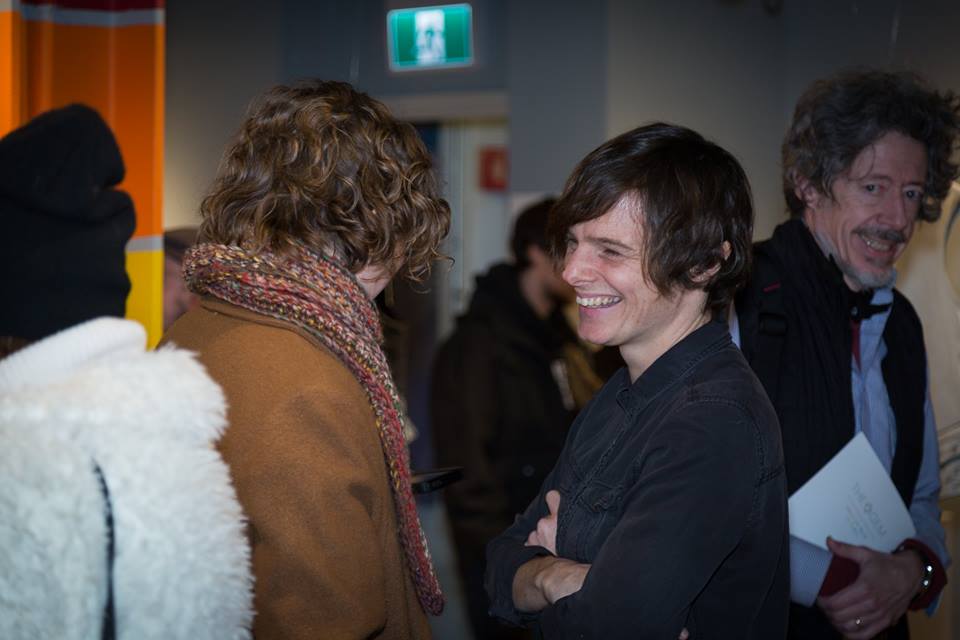
Dusty Green, from the New Brunswick Queer Heritage Initiative, shares a set of five glass negatives pulled from the Provincial Archives of New Brunswick. The photos offer a rare glimpse into the changing nature of homosocial relationships during a time when homosexuality was beyond taboo. The kinship between Leonard Keith and Cub Coates is captured in these candid photos, and their love, in whatever way they would have described it, is a touching reminder of the resilience of queer love and its place in New Brunswick.
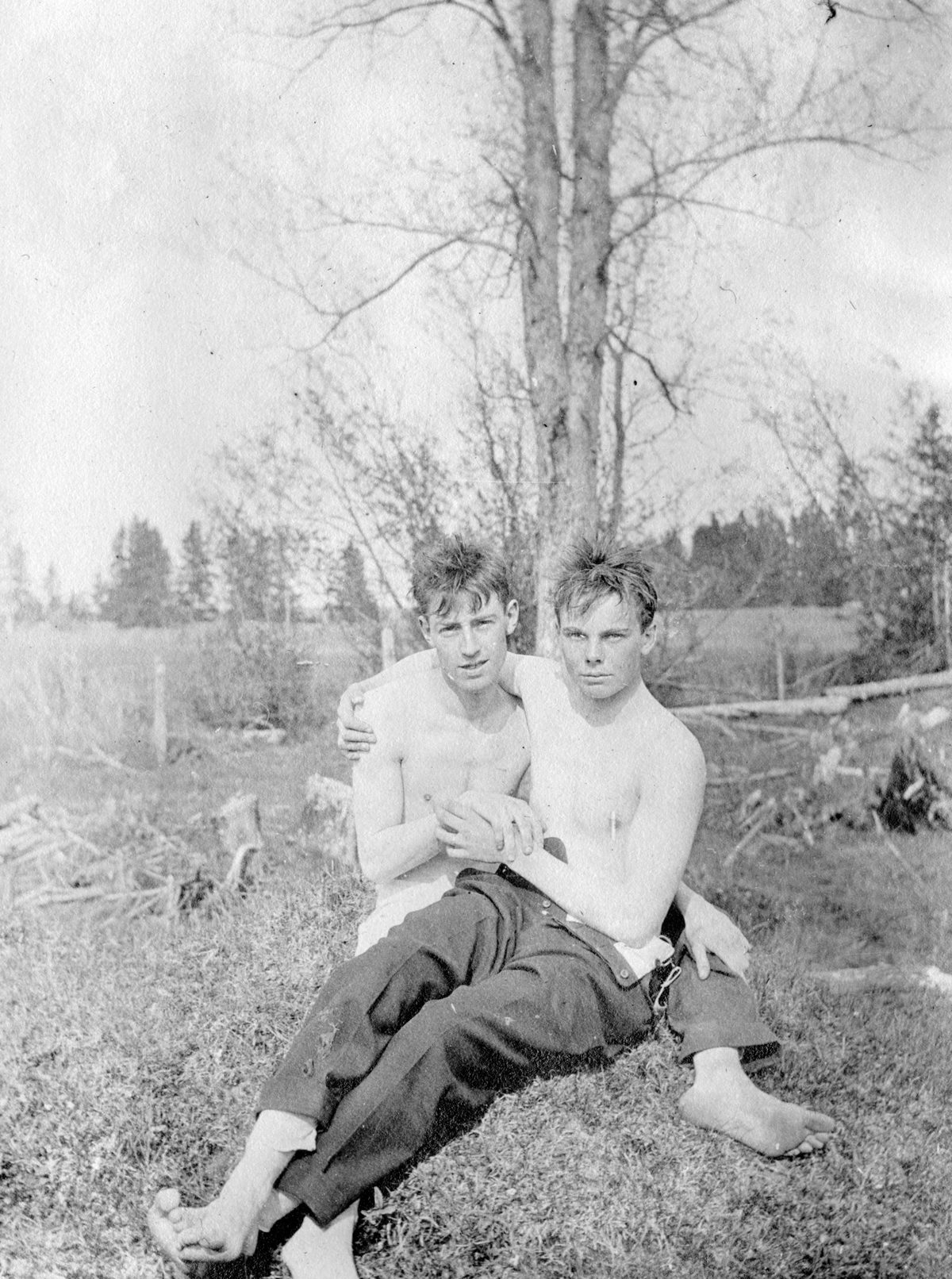
Boy Venus (Seamus Hayes) offers a multi-screen video collage of important moments in queer history, from Operation Soap and the Stonewall riots, to liberation marches and contemporary pride parades. He presents a curated overview of the modern queer rights movement with a distinct focus on liberationists and activism.
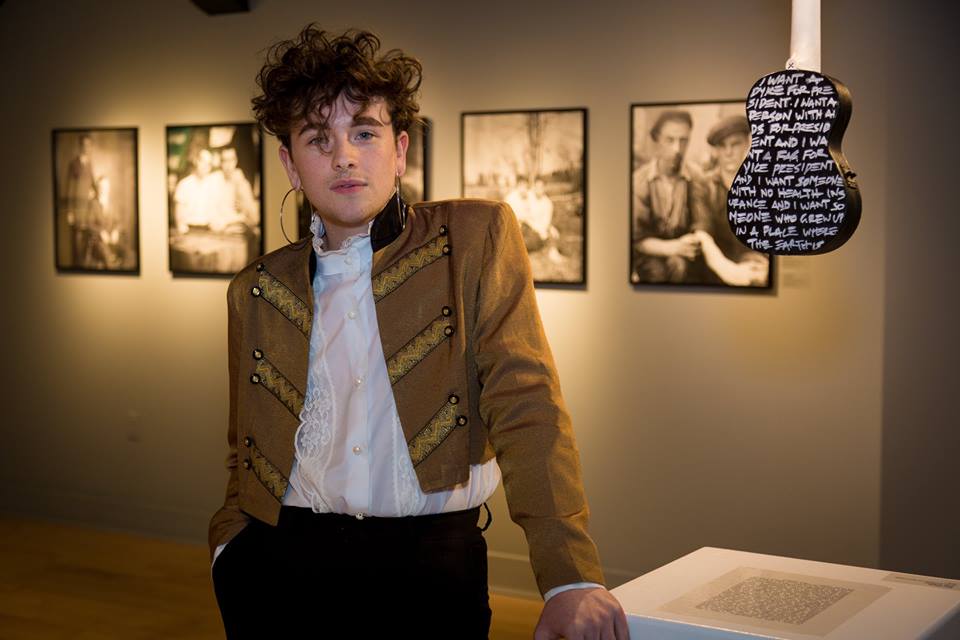
The collective work of these artists shows an uncanny longing for an imagined queer-friendly past, and a voracious and resilient desire to claim space for a queer-loving future. Each of these works is inextricably wrapped in a shared queer history, a history the artists celebrate while providing a memoir for future generations of liberationists to draw from. Even as the political climate of our world retreats to the tired bastions of nationalism and reactionism, queer voices carry on as they always have – vibrant, alive, informed, and unwilling to compromise their love.
“We cannot safeguard our rights without knowing how they have been undermined. . . in this regard, one of our greatest challenges is posed by silence.” – Lyle Dick, Queer Archivist & Historian
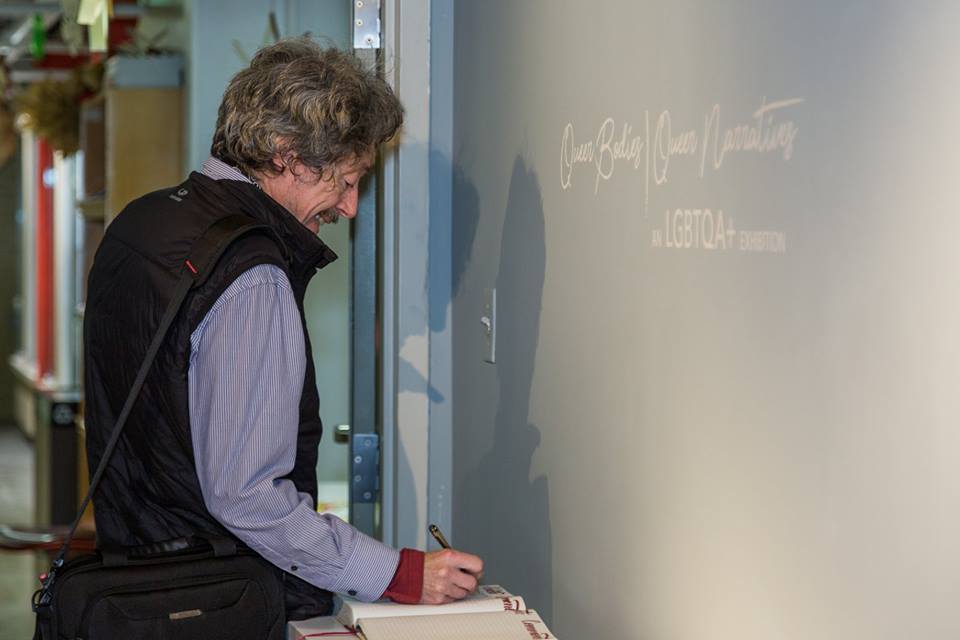
This review is written by participating artist Dusty Green, exhibition images by Hailley Fayle Photography. To view the exhibition and gain insights directly from participating artists, attend the panel discussion on January 9th.
